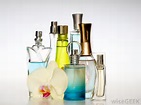









Personality In Perfume
It takes years to design a perfume, and millions of pounds to market it. And who knows if anyone will buy it? Perfume houses, then, have had a tremendous interest in trying to establish personality types, so they can more effectively create perfumes that people want, and market them effectively.
In market research people will be asked whether perfume reminds them of a glamourous cultivated lady, a successful career woman or a fresh and sensitive young girl, so the perfume houses can have a clearer idea of people's perception of the 'character' of any particular perfume, so they can market them accordingly.
As part of the drive to know the market, the fragrance house H&R (Harmann & Reimer) in conjunction with the Research institute for Applied esthetics of Freiburg, Germany, have adapted the Luscher colour-test to identify personality types which, in turn, can be linked to particular fragrances.
According to their system, there are seven groups of female fragrance buyers, classified as A-G : extroverted, introverted, emotionally ambivalent, emotionally ambivalent with extroverted mood trend, emotionally ambivalent with introverted mood trend and emotionally stable with extroverted mood trend and emotionally stable with introverted mood trend.
Each of these personality groups is further defined. For example, The Group D personality is described as '...lively, cheerful and vivacious, yet easily injured. This group reacts spontaneously to its environment .....', and so on, and is designed with the 'fragrance need' floral, floral-fruity. Group A '....quickly impart life to a boring group...'; Group B '...would rather stay home than go to a boring party'; Group C... 'enjoy dreaming about things that cannot possibly ever come true...' and so on.
These are of course just glimpses of the much fuller description given to the personality types which are interesting because they are the links between colour preference and fragrance need, as far as this system of classification is concerned.
Classifications are, of course, variable and dependent upon the requirements of particular groups. The fragrance industry needs to be able to tie in its product, which has a particular fragrance, with the marketing approach they need to make to achieve maximum returns on their considerable investment.
The Luscher colour test is itself used extensively by educational and behavioural psychologists to ascertain the personality traits so people can be encouraged to perform better in life, while 'colour imagers' have another attitude to colour - choosing clothes to suit the skin tone and hair colour of a particular woman ( and ' colour therapists ' use colour light-filters projected onto their patients for healing, while mental colour therapists use colour projected from their minds to heal - which might sound strange until one considers the fact that all life is vibration - which colour is too).
The fragrance industry recognizes very well that people choose different perfumes for different activities, to complement the moods they may be in at any particular time.
Reference: The Fragrant MInd : V A Worwood.
- Home
- Addiction
- JASMINE- Floral - Jasminum Officinale,J. grandiflorum, J.sambac
- History of Drugs-4
- History of Drugs
- History of Drugs-3
- The Somatid Connection
- Rosemary-Personality-Profile
- Personality In Perfumery
- Personality Tests
- The Water Connection
- Cinnamon - Personality profile
- Mind-Mood-Emotion-Quick Reference Chart - S - Un
- History of Drugs-5
- Mind-Mood-Emotion-Quick Reference Chart - Un - W
- Emotional-Healing Problems-A-B-Positive and Negative Mood Charts
- Emotional-Healing Problems-B-H-Positive and Negative Mood Charts
- How Essential Oils Work On the Brain
- Cardamom Personality Profile
- Essential Oils Used For Emotional Healing-A-M
- Lavender- Floral/Herbie
- Positive Mind, Mood & Emotion - Alertness
- Juniper personality profile
- JASMINE- Floral - Jasminum Officinale,J. grandiflorum, J.sambac
- HYACINTH - Floral - Hyacinthus Orientalis
- Emotional Healing Introduction - 2
- Emotional Healing Introduction
- Memory Enhancement, Mental Clarity and Efficiency
- How To Get Through Life In One Piece
- HELICHRYSUM (Immortelle or Italian Everlasting)
- GRAPEFRUIT - Fruitie - Citrus paradisi
- The Art Of Smelling - Which Method - Aromaprofiles
- The Art Of Smelling
- GINGER PERSONALITY PROFILE
- Geranium - Pelargonium graveolens Personality Profile
- Frankincense Resinie - Boswellia Carteri
- Quality and Purity - 2 - AromaProfiles
- Quality and Purity - AromaProfiles
- ChemoTypes - AromaProfiles
- Adaptogens - AromaProfiles
